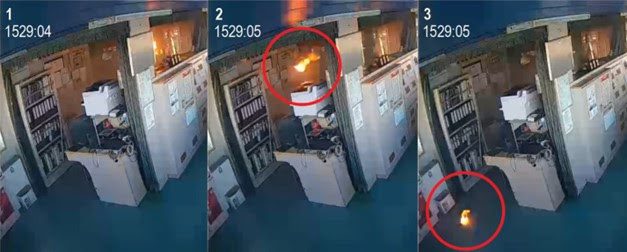By GMM Training | 2023-12-27 | Case Accidents |
By the US National Transportation Safety Board (NTSB) information that a fire on an oil tanker last year was caused by the thermal runaway of a cell within a handheld radio’s lithium-ion battery.
The incident occurred while the vessel, named S-Trust, was docked at the Genesis Port Allen Terminal in Baton Rouge, Louisiana, on November 13, 2022.
The fire resulted in extensive damage throughout the bridge, including significant smoke and thermal damage, amounting to $3 million in total. The navigation systems, communication systems, and alarm systems on the vessel were irreparably damaged.
According to the NTSB’s investigation, the fire originated from an explosion of one of the cells in a lithium-ion battery used for an ultra-high-frequency handheld radio.

The S-Trust carried 20 of these radios for communication during vessel operations. The batteries and chargers were stored on the communications table on the bridge. Fortunately, the crew managed to extinguish the fire, and no injuries were reported.

Lithium-ion battery cell explosions are commonly caused by thermal runaway, a chemical reaction that can lead to the cell igniting and exploding. Thermal runaway can occur spontaneously if the battery is damaged, shorted, overheated, defective, or overcharged.

To prevent thermal runaways and subsequent fires, the NTSB advises crews to follow manufacturers’ instructions for the care and maintenance of lithium-ion batteries, properly dispose of damaged batteries, avoid unsupervised charging, and keep batteries and chargers away from heat sources and flammable materials.
The NTSB report also recommends that companies ensure that lithium-ion batteries and devices using these batteries are certified by Underwriters Laboratory or another recognized organization.
In the event of a lithium-ion battery fire, crews can attempt to extinguish the fire using water, foam, CO2, or other dry chemical or powdered agents designed for Class A (combustible) fires. If the fire cannot be extinguished, personnel should allow the battery pack to burn in a controlled manner while monitoring for nearby cells experiencing thermal runaway and extinguishing other combustible materials that may catch fire.
Overall the incident highlights the importance of proper handling and maintenance of lithium-ion batteries to prevent hazardous situations and ensure the safety of personnel and equipment.
Marine Investigation Report 23-23 is available on the NTSB website.



















